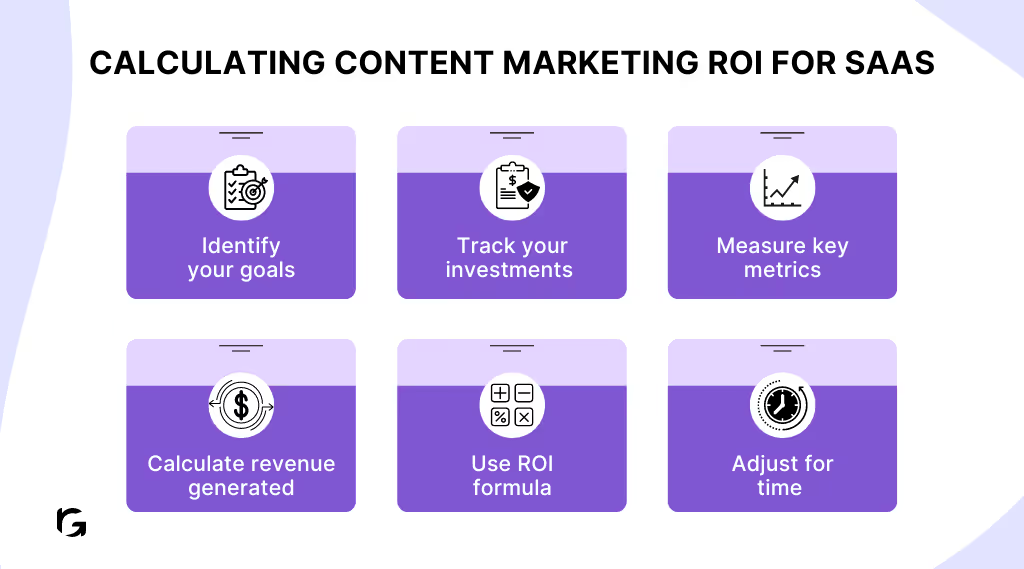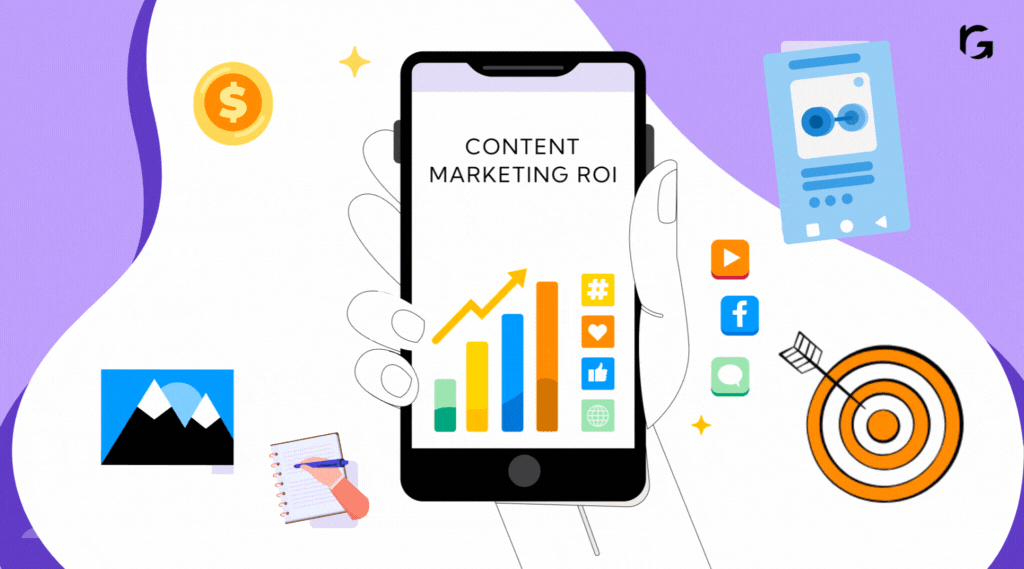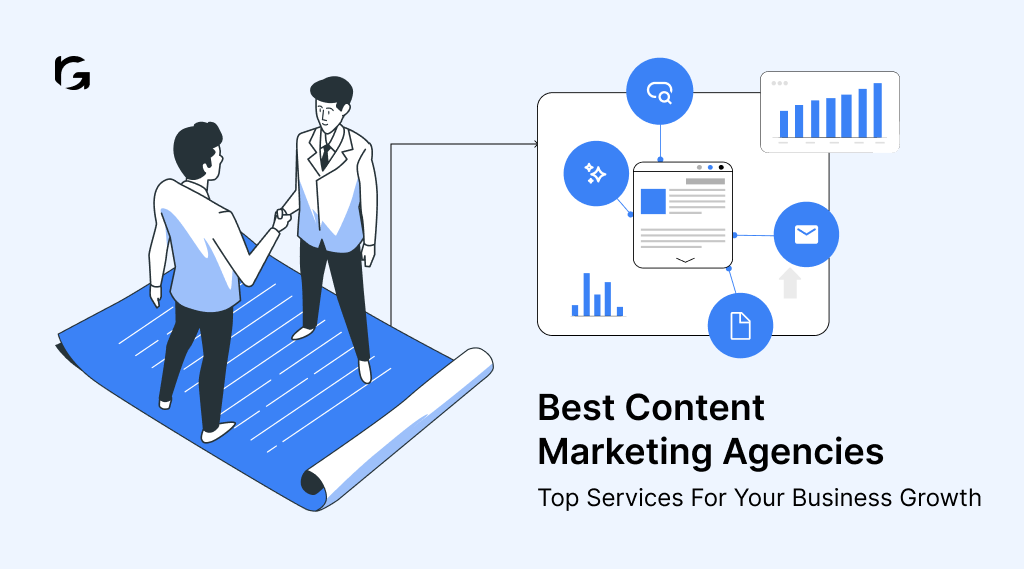Are you spending time and money on content marketing but not seeing the content marketing ROI you hoped for? At RevvGrowth, we believe the real power of content lies in its ability to show measurable results. To help you achieve this, we have created the Content ROI Dashboard which is designed to maximize your content marketing ROI with ease and precision.
Importance of content marketing ROI
Content marketing is essential for attracting and engaging your audience, building brand awareness, and driving sales. But to know how effective your efforts are, you need to measure your return on investment (ROI). Here’s why you should focus on ROI:
- See how your content is performing
- Make better decisions
- Use your resources wisely
- Prove your value
1. See how your content is performing
ROI measurement shows you how well your content is doing across different channels. For instance, you can track engagement and conversion rates on LinkedIn, email campaigns, and webinars. Identifying the highest-performing content types and platforms allows you to double down on what works, enhancing your overall strategy.
2. Make better decisions
Knowing what works and what doesn’t lets you refine your content strategy. If a particular blog series or video content isn’t resonating with your audience, you can pivot to more impactful formats. By leveraging ROI data, you ensure your decisions are data-driven, leading to more effective content marketing efforts that align with your business goals.
3. Use your resources wisely
Measuring ROI ensures every dollar and hour spent on content marketing yields maximum returns. This means you can allocate more budget to high-performing channels, like LinkedIn ads or sponsored content, that drive substantial engagement and leads. Efficient resource allocation not only optimizes your marketing spend but also enhances team productivity by focusing on impactful activities.
4. Prove your value
ROI metrics provide clear evidence of the value your content marketing brings to the table. You can present data showing how specific campaigns contributed to lead generation, customer acquisition, and revenue growth. This proof of success helps justify current and future investments in content marketing to stakeholders, ensuring continued support and funding.
Introducing our Content ROI Dashboard
Our Content ROI Dashboard is designed to help marketers understand and improve their content performance. Here’s what makes our dashboard special:
- Easy to use: Our dashboard is simple and user-friendly. You don’t need any technical skills to use it.
- Real-time data: Get the latest performance data for your content and make timely adjustments to your strategy.
- Detailed reports: Access in-depth reports that analyze your content’s impact, including engagement metrics, conversion rates, and ROI calculations.
- Customizable metrics: Adjust the dashboard to track the metrics that matter most to your business, ensuring you get relevant insights.
Benefits of implementing and using Content ROI Dashboard
Implementing and using a content ROI dashboard can offer several advantages:
- Find high-performing content
- Improve your strategy
- Increase efficiency
- Showcase success
Find high-performing content
Discover which content drives the most engagement, traffic, and sales. Use this information to create more successful content. You'll get a clear picture of what resonates with your audience, allowing you to replicate and scale winning strategies. It’s all about focusing on what works and doubling down on it.
Improve your strategy
Use the insights from the dashboard to continually refine and optimize your content marketing strategy. Understand which channels and formats work best and allocate resources accordingly. This way, you’re always in the know about what's effective, making tweaks that keep your content fresh and impactful.
Increase efficiency
Spend less time guessing and more time on actions that deliver results. The dashboard helps you focus on activities that give the highest returns. It streamlines your efforts, so you're not wasting time on low-impact tasks. This means you can achieve more with less, boosting productivity across your team.
Showcase success
With clear ROI metrics, you can show the success of your content marketing efforts to stakeholders, building confidence in your strategy and securing future investments. This transparency helps in making informed decisions and justifying your marketing spend. It also positions you as a strategic leader who delivers measurable results, making it easier to get buy-in for your ideas.
How do you calculate content marketing ROI for your SaaS business?
Calculating content marketing ROI for your SaaS business involves several key steps:

- Identify your goals
- Track your investments
- Measure key metrics
- Calculate revenue generated
- Use ROI formula
- Adjust for time
1. Identify your goals
Determine what you aim to achieve with your content marketing efforts, such as increasing brand awareness, generating leads, or driving sales.
2. Track your investments
Document all expenses related to content creation and distribution, including tools, salaries, freelance fees, advertising costs, and other related expenditures.
3. Measure key metrics
Track metrics that align with your goals. For example, if your goal is lead generation, focus on metrics like the number of leads, conversion rates, and cost per lead.
4. Calculate revenue generated
Attribute revenue to your content marketing efforts by tracking sales and conversions that resulted from your content. Use tools like Google Analytics to trace conversions back to specific content pieces.
5. Use ROI formula
Use the formula [(Revenue from Content Marketing - Cost of Content Marketing) / Cost of Content Marketing] * 100 to calculate your ROI. This will give you a percentage indicating the return on your investment.
6. Adjust for time
For SaaS businesses, consider the recurring revenue model. Calculate the ROI over different time periods to understand both short-term and long-term returns.And now, what if we tell you that we also have some tips to better understand and optimize your content? Well yes! Below are some tips that will help you maximize your content performance:
- Choose the best channels: Look at which platforms give you the best results and prioritize them for sharing your content. Move resources away from channels that aren’t performing well.
- Update old content: Regularly review older content that still gets traffic. Add fresh insights, statistics, and visuals to boost its performance.
- Predict trends: Use the dashboard to forecast which topics will be popular in the future. Plan your content around these predictions to stay ahead of the curve.
- Match content to sales stages: Create content for different stages of the buyer’s journey. Use the dashboard to see which types of content work best at each stage and adjust your strategy accordingly.
- Repurpose content: Turn high-performing content into different formats, like videos, infographics, or podcasts. This helps you reach a wider audience.
- Monitor competitors: Use the dashboard to see how your competitors are performing. Find gaps in their content strategy and use them to your advantage.
How to get started?
Taking control of your content marketing ROI is simple with the Content ROI Dashboard. Here’s how you can get started:
- Download the dashboard: Visit our website to download the Content ROI Dashboard. It’s quick and easy to get started.
- Integrate your data: Connect the dashboard to your existing content marketing platforms and data sources. Our user-friendly setup process ensures a seamless integration.
- Analyze and act: Begin tracking your content performance in real-time. Use the insights provided to make informed decisions and optimize your strategy for better results.
Download the Content ROI Dashboard now!
Try our Content ROI Dashboard to improve your content marketing efforts. Get powerful analytics, detailed reports, and actionable insights to reach your goals faster.
FAQs
1. How can the dashboard help my business?
Answer: It shows how your content is performing, helps make data-driven decisions, optimizes resource use, and proves your content's value. 2. Can I customize the dashboard to my needs?Answer: Yes, you can adjust it to track the metrics that matter most to your business.3. Is the dashboard compatible with my existing tools?Answer: Yes, it integrates seamlessly with most content marketing platforms and data sources.4. How often is the data updated?Answer: The dashboard provides real-time data updates for accurate and timely insights.5. Can I use this dashboard to compare different content strategies?Answer: Absolutely, it helps you see which strategies work best and refine your approach accordingly.



.svg)


.webp)